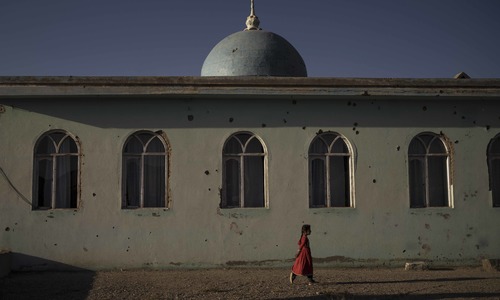UNITED NATIONS: The United Nations has warned that nearly 23 million people, or 55 per cent of the Afghan population, are in crisis or will experience emergency levels of food insecurity between now and March of next year.
Speaking to journalists in New York, Deputy Spokesperson for the Secretary General Farhan Haq also pointed out that isolated clashes and violence have continued countrywide this week.
“Our humanitarian colleagues warn that nearly 23 million people — or 55 per cent of the Afghan population — are estimated to be in crisis or experiencing emergency levels of food insecurity between November 2021 and March 2022,” Mr. Haq said.
“Our colleagues tell us that reports of isolated clashes and violence affecting civilians and resulting in casualties continued countrywide this week.”
According to the UN gunfire directed at de facto authorities in Jalalabad resulted in the deaths of two children on Nov 1; and a roadside radio-controlled improvised explosive device detonation killed two civilians on Nov 3.
On Thursday, armed clashes were reported in Bamyan Province, resulting in the injury of five people, including one civilian.
On Nov 3, the UN Food and Agriculture Organisation (FAO) began the autumn season wheat seed and fertilizer distribution campaign in eastern Afghanistan. FAO expects to reach nearly 140,000 people in the provinces of Nangarhar, Kunar, Laghman and Nuristan. The Afghanistan Flash Appeal, which targets 11 million people with aid until the end of the year, seeks $606 million and is currently 54 percent funded.
In its latest situation report, the UN Office for the Coordination of Humanitarian Affairs (OCHA) shows concern about “conditional humanitarianism” or attempts to “leverage” humanitarian assistance for political purposes.
Donors have asked world powers to exempt humanitarian operations from sanctions, to allow these activities to continue without impediment.
Since Sept 1, 2021, the UN agencies and their partners have reached 48,383 children with community-based education activities, supported 82,761 people with emergency shelter and non-food items, and provided 4.1 million people with food assistance.
About 580,050 people got primary healthcare and 85,623 children under five received treatment for Acute Malnutrition.
Even before Aug 15, when the Taliban captured Kabul, the humanitarian situation in Afghanistan was one of the worst in the world.
By the mid-year mark, nearly half of the population, some 18.4 million people, was already in need of humanitarian and protection assistance.
Protection and safety risks to civilians, particularly women, children and people with a disability, were also reaching record highs.
Published in Dawn, November 7th, 2021















































